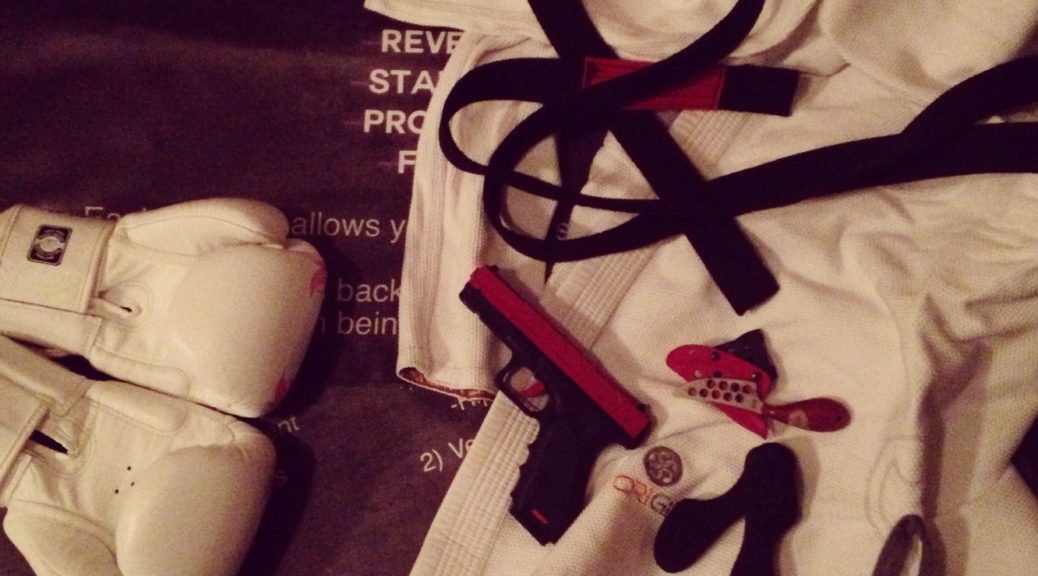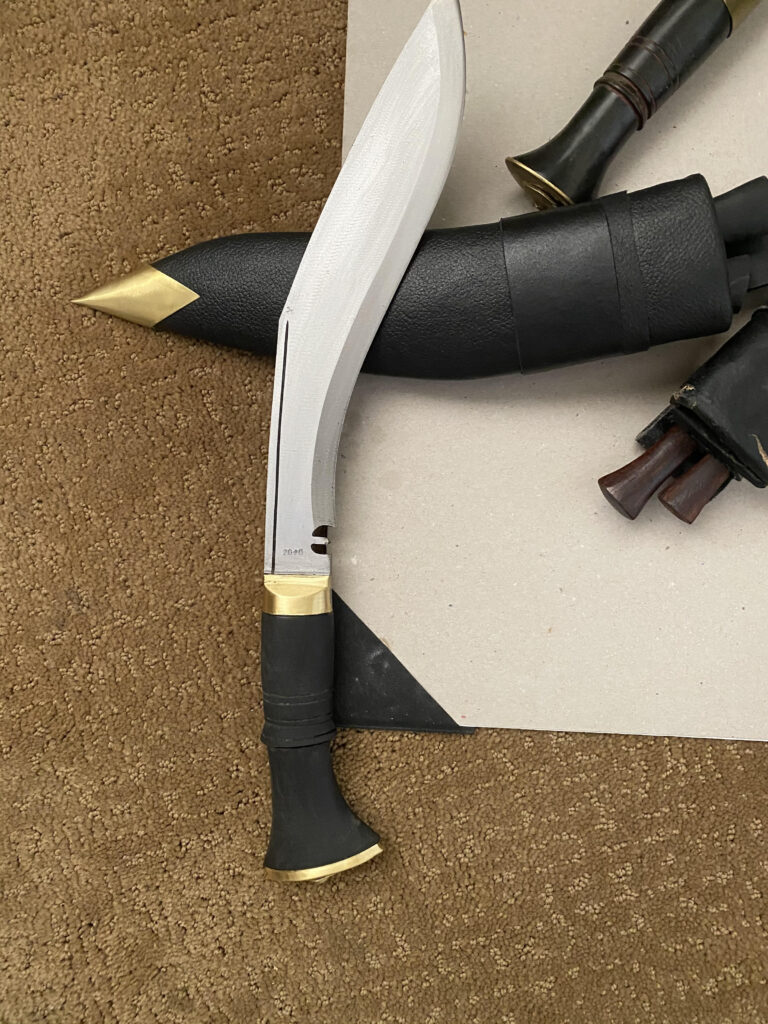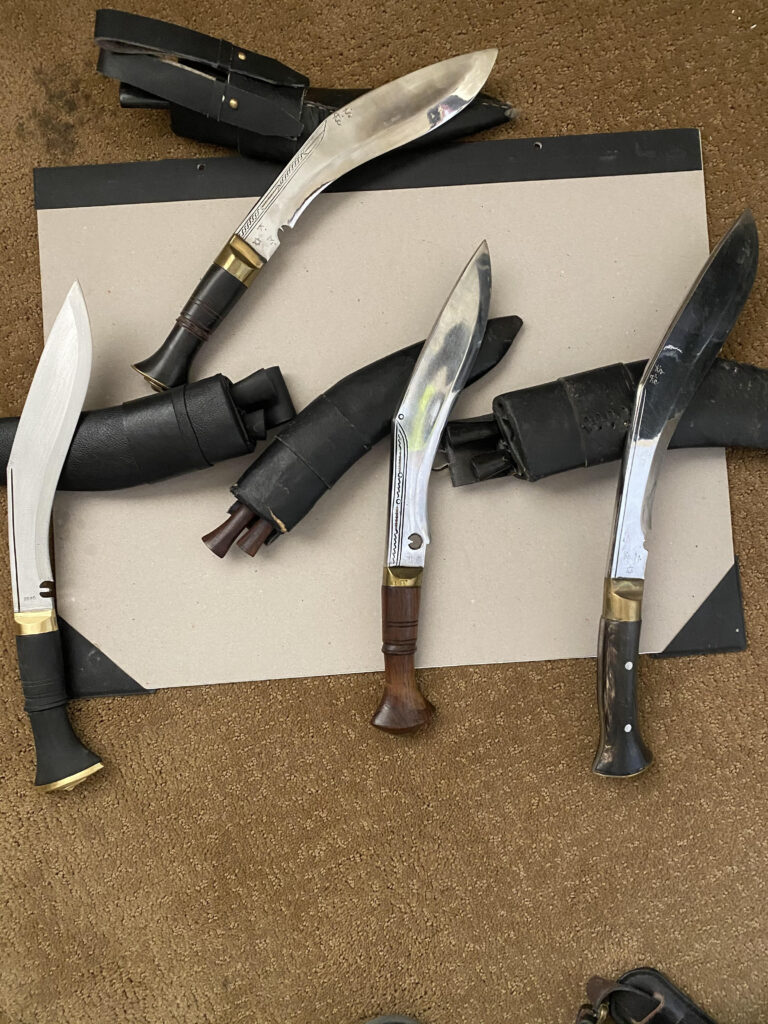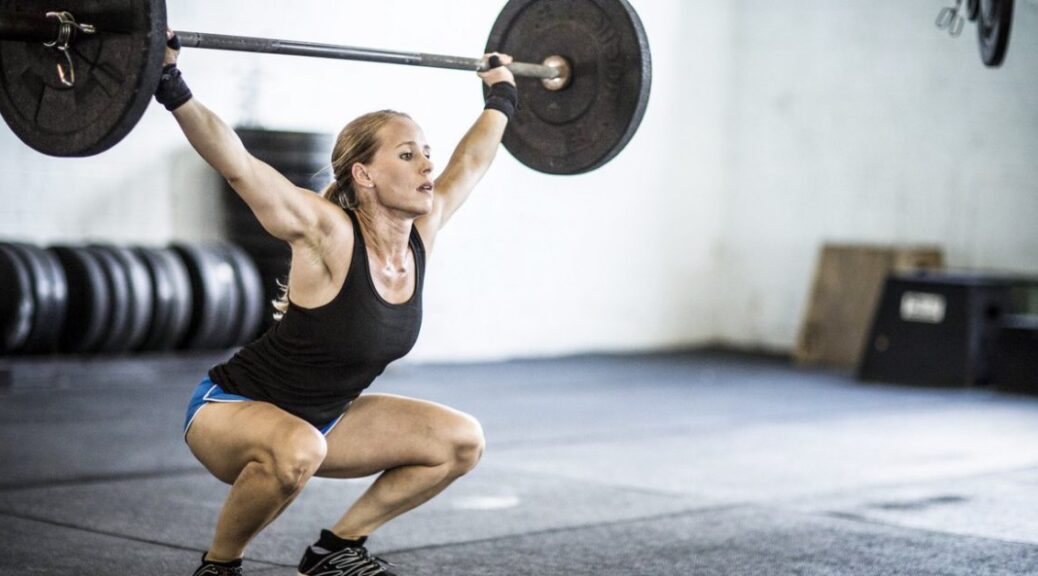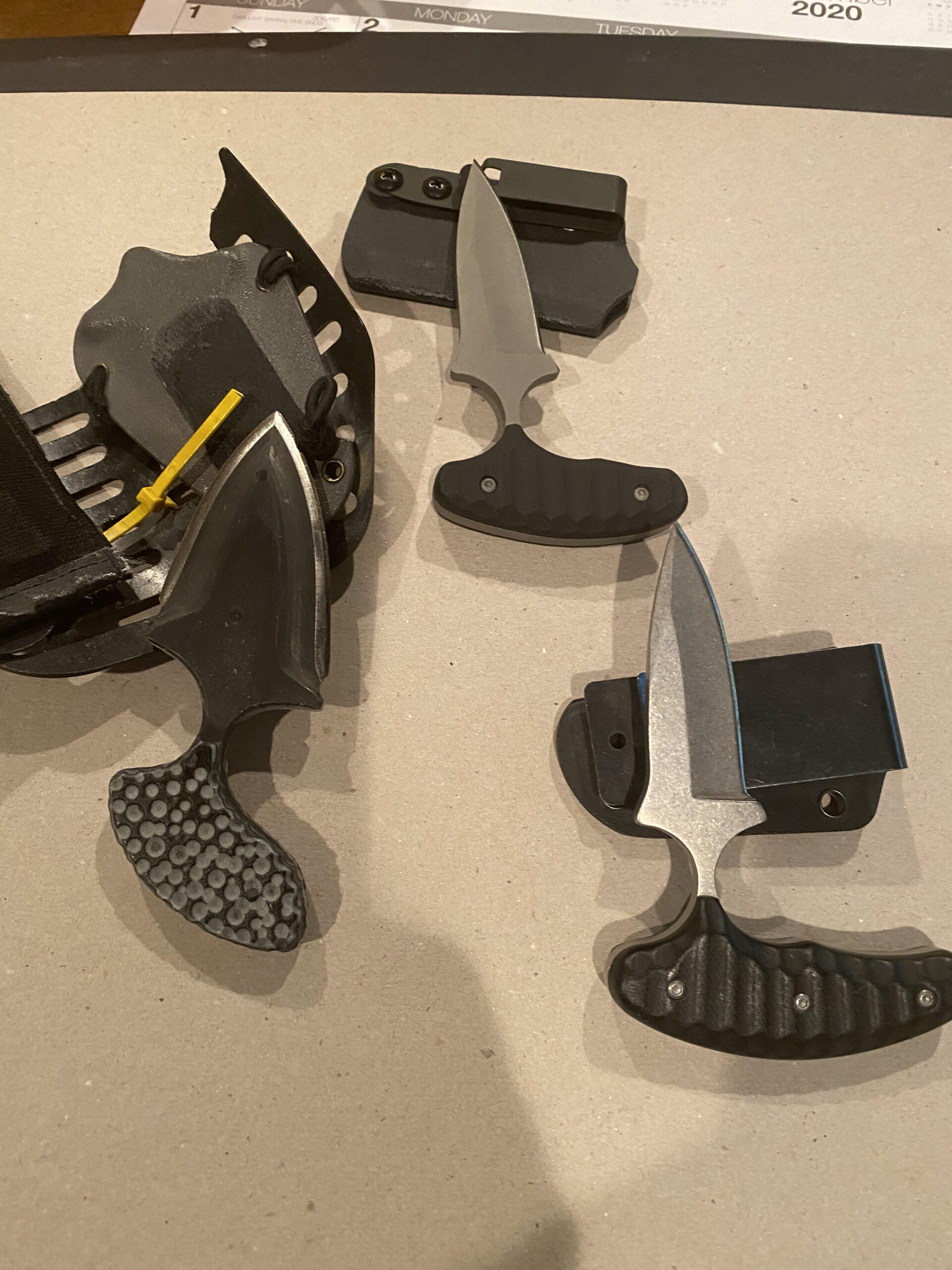After my recent article about the new El Nino push dagger from Shivworks Product Group, I received a number of inquiries about not just that specific blade, but push daggers in general. As a follow up, I decided to do something for everyone to read.
From the early 2000’s to roughly 2007, I was in a full on deep dive on push daggers. As a long term Filipino Martial Arts knife-centric geek (my training in FMA started in 1984, though I had been reading and trying to do it on my own since 1980) I had toyed with push daggers n the past, but they are not optimized for a normal FMA outlook. However as I shifted to a more combat sports focus centered on boxing, Greco-Roman wrestling, and Brazilian Jiujitsu, the PD became more interesting and useful, because it is an ideal platform for someone who has a classic boxing fighting game.
Whereas FMA and other blade oriented arts spend much of their time on intricate slashing and varied stabbing patterns, the push dagger is much simpler – lock the handle tightly in your clenched fist and punch. Punch the same targets as in the same manner you would if you had a bare knuckle closed fist. Think the long straights of the jab or cross and the tight infighting strikes of an uppercut or shovel hook. You do not need to change anything, and you do not have to spend an extraordinary amount of time to build the push dagger techniques into your already existing fighting methodology. Essentially all you have to work on is making sure your hand is holding the PD tight and firm. But you should have that tight a fist formation even as a pure empty hand striker, so it is not intrinsically different, which is quite unlike trying to add in the classic FMA/Indonesian/Japanese/or other typical knife fighting system.
The other vital area to ensure the best outcome is to focus on precision in your hits. Don’t just throw strikes at general areas, but rather a precise and defined spot. One of the reasons people hurt their hands when punching in the street (besides a poor fist formation) is not targeting small areas. If you think of “hitting the head”, that is probably what you will do, to include bony skull. If instead you try to hit the small moustache notch between the nose and mouth, you will be far more likely to come close to that and not inure your knuckles. Think of the proven shooting adage of “aim small, miss small”. On a similar note, blades are not great stoppers and that can be exacerbated by just stabbing blindly. Again, purposefully looking for a precise spot will make for a more effective result, and even be more humane because you will not have to stab someone 37 times to produce an effect.
And if you also have a solid “dirty Boxing” game (i.e. a combined clinch and striking method where you control the opponent as you fire off close range strikes), it is even more effective. Having dominant positional control while firing push dagger fueled shots into the bad guy while he has little say in the matter makes for a pretty good self-defense plan, and makes for a better method for stopping him from committing more violence on you or your loved ones.
And an even better add on is that each side of the equation helps minimize the deficiency on both parts. The weakness of striking is that no matter how hard you hit, you are limited in power by size/mass. You can have the best mechanics but if you weigh 140 pounds, you will not hit as hard as the 250 pounder with crappier mechanics. There is a reason that great lighter weight boxers, even ones known to hit hard like Roberto Duran, never won a heavyweight championship. By putting a sharp metallic object in there, it significantly up scales what you deliver when you land that strike. And the weakness of the push dagger (or any blade for that matter) is that sometimes the bad guy does not know he has been stabbed and it had little immediate effect. However, when you are hitting them with good mechanics, power, and precision, it amplifies what is felt by the attacker in a way that him being stabbed alone does not accomplish.
While it is a fairly simple step to go from a boxing game to adding a PD into the game plan, you do still need to put a bit of time into specific training. Obviously you need to get used to holding it and being mindful of the blade and you need to get used to the handle being in the middle of your palm as you make a fist, but you also need to understand what it feels like to strike something hard and unyielding. This is the step missed by about 98% of the PD makers because if they took the time to test their own blades in this manner, they would not be putting out the designs that they do with features like too long a junction between blade and handle (probably the most egregious violation with most PDs). I suggest a small step first to make sure that the blade is not going to turn or collapse in your hand when you make contact (and my first step whenever I test a new PD) is to take a bunch of cardboard and fold it over or stack different pieces until they are about 18 inches thick, wrap it all over in duct tape, and attach it to something that gives a bit like a heavy bag, and then start striking it. Just make sure that you start with minimal power and gradually amp it up. You may also want to wear some kind of protective glove. I have cut myself on a few poorly designed push daggers in the past when I tested them in this manner. Having an extra safety layer to protect the hand can be a nice bonus. If you can hit the cardboard full force and the handle stays locked in place, then move up to tougher targets. My favorite ones are 5 – 10lb bags of rice or beans wrapped in duct tape (I like doing this because it helps simulate clothing and/or skin resistance without going beyond realistic expectations). Not too expensive and easily obtained, but still gives a reasonable response.
Before you carry one and rely on it for self-defense, make sure you vet any push dagger by actually doing this step. Do not skip it.
Once all the above is understood, there still remain two potential drawbacks to the push dagger.
The first drawback to consider, and one I cannot help you with, is the legal aspect. Many jurisdictions ban any kind of PD. If so, then I strongly advise you to not ignore this fact. Using a banned weapon, even in an otherwise legally justified situation, may go against you. This is an important but often overlooked point.
The other problematic area is that regardless of how you carry, it is close to impossible to effectively set the sheath up in way that the blade is equally accessible and deployable by either hand in an ambidextrous manner. And in truth, this is the main reason I finally went away from primary carry of a push dagger. My main knife is the Craig Douglas designed ClinchPick and I prefer to carry it as Craig envisioned – on the belt, forward of the hips, with the handle pointed in towards your centerline at a diagonal angle. This allows absolute equal access by either hand. No matter what the position you find yourself in, even if you are pinned to the ground belly down with the bad guy on top, as long as you can articulate the elbows, you can get the ClinchPick out. I tried to achieve this same thing with a PD but could not solve the problem. I had multiple custom kydex sheaths made to my specs, and tried untold number of places and spots on the body to match this hugely helpful carry method, and none of them worked. If one hand was optimized, then even if the other hand could reach the knife, it was with much more contortions or extreme angles. In other words, not optimal for a life or death struggle where every second and inch count.
Now, this is not necessarily a deal breaker for some folks. After all, we already give up that same ability with our typical handgun carry set up, and most of the time with our spare carry ammo. Yes, I know we all work on that weak hand only draw from our appendix rig, but how truly functional is it? It is possible yes, but far from a good thing. For some people, having the pistol set up for right hand draw, and the PD on the left side with the plan that the left hand will use it is a pretty good concept. I offer this possible negative aspect not to tell you to completely dismiss the push dagger in your personal system, but merely to ensure you are aware of any possible problems. I myself still carry a Special Circumstances Sominer Infernus PD on a Chris Fry designed Pocket Shield in my left pocket many times, and I am completely comfortable knowing that it can only be drawn by my left hand. I just have made other plans when that is not possible. No big deal, as long as we plan ahead.
To sum up, the Push Dagger can be a very viable and useful tool but like all tools (to include the EDC pistol) we need to do a bit of work to put it to its best use.

